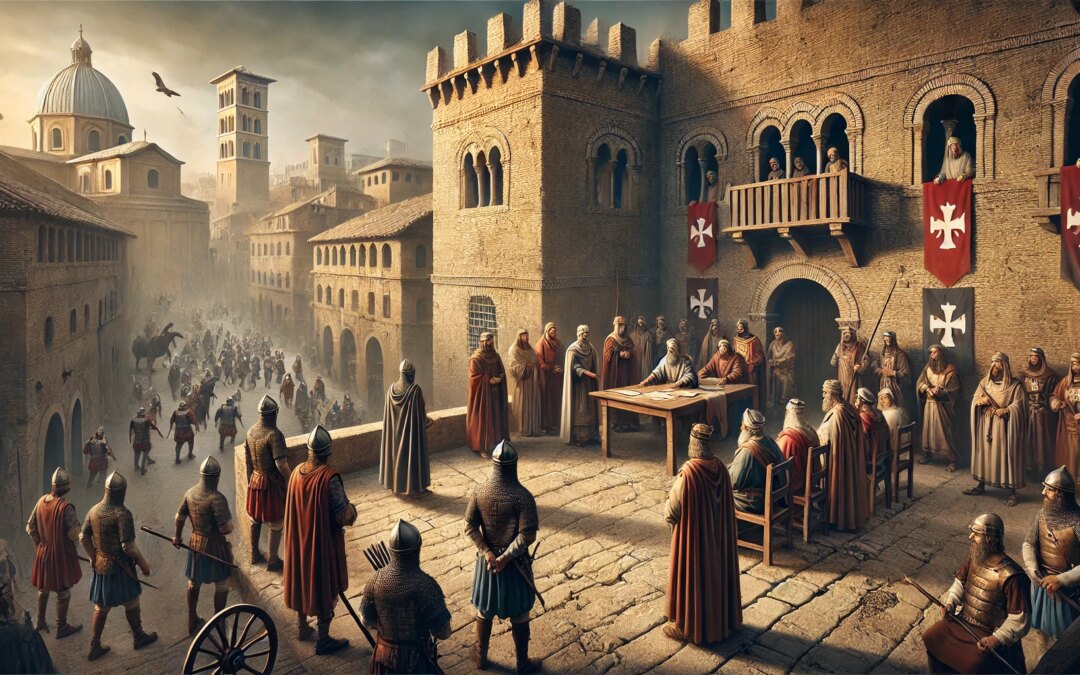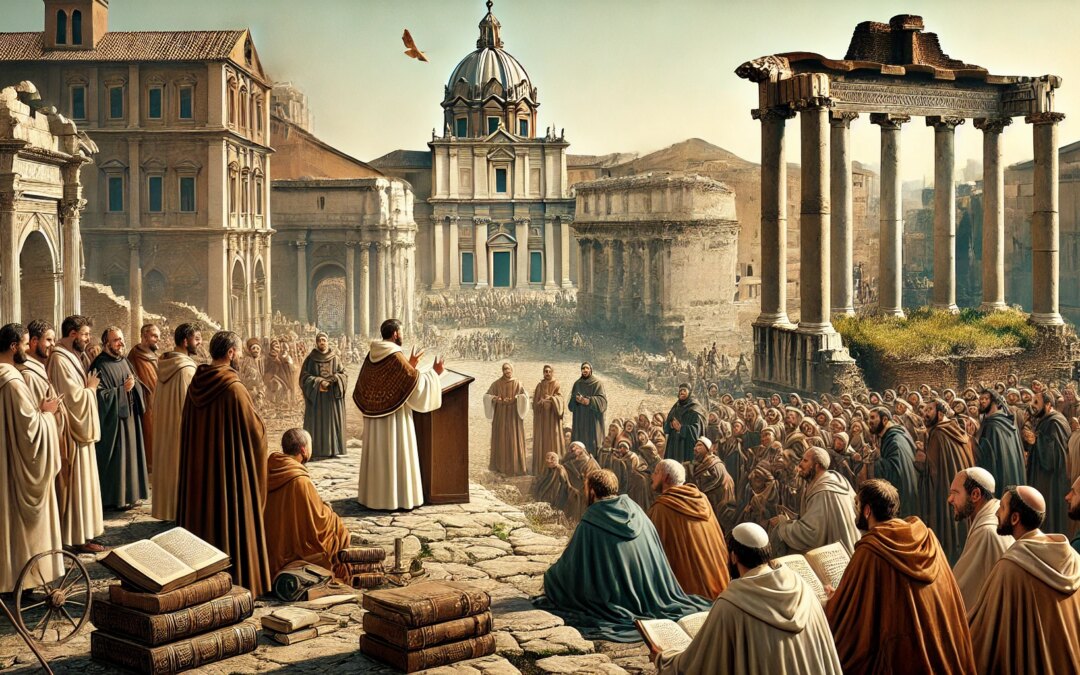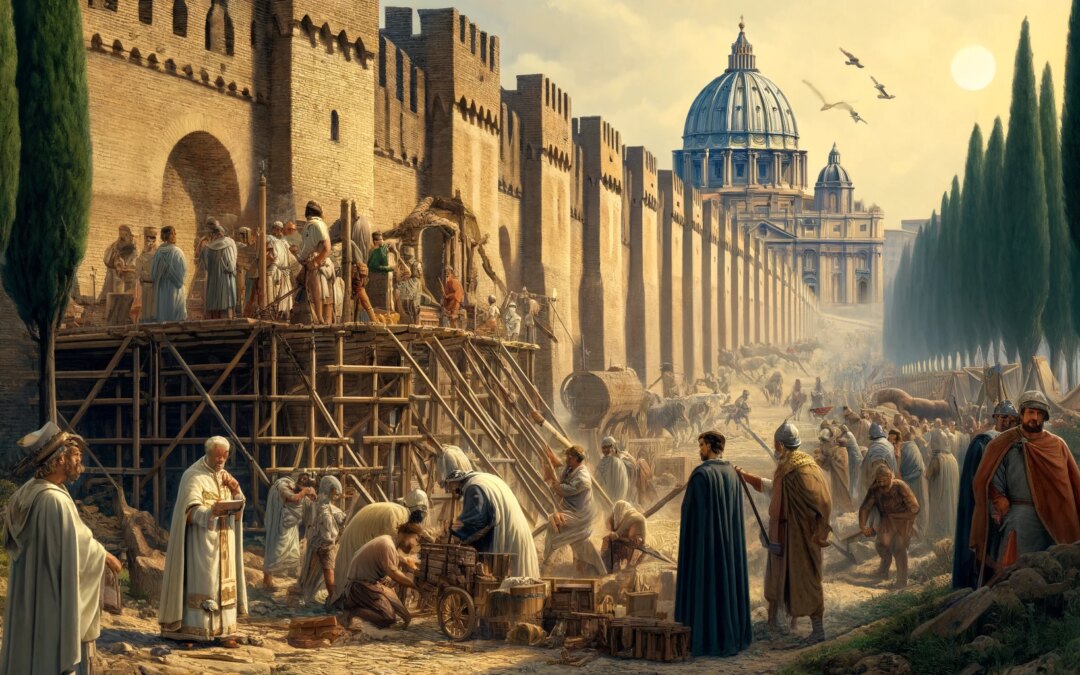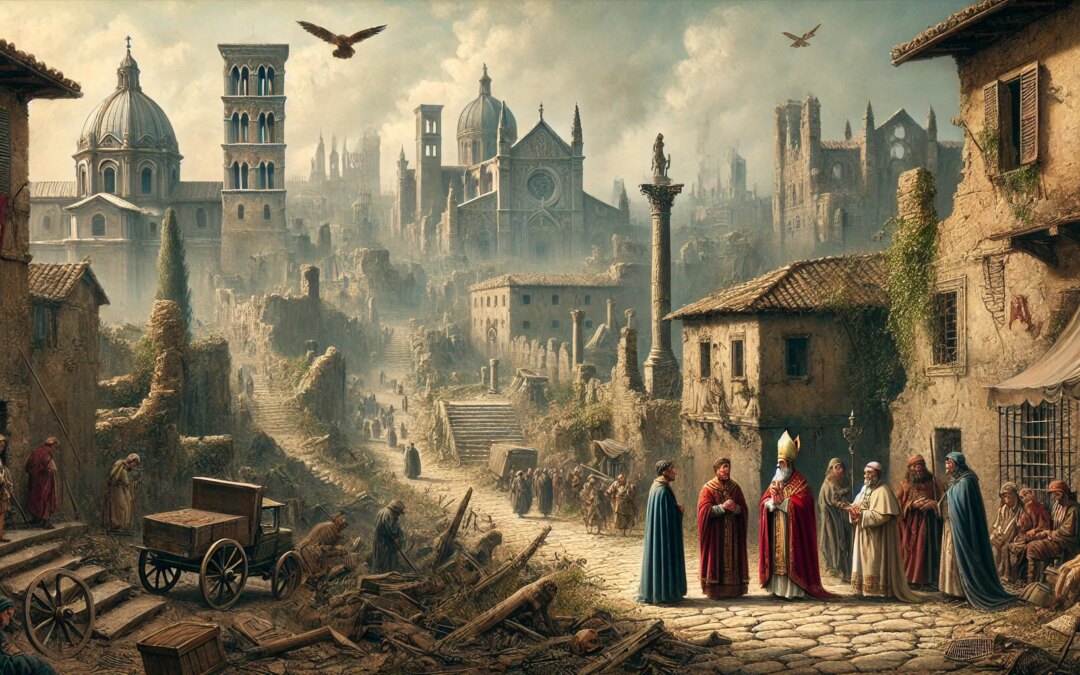In the 10th century, the Crescentii family dominated Rome, controlling the papacy and shaping the city’s medieval politics through strategic alliances and intrigue.


In the 10th century, the Crescentii family dominated Rome, controlling the papacy and shaping the city’s medieval politics through strategic alliances and intrigue.

In the 7th century, Pope Gregory I guided Rome through its transition from antiquity to the medieval era, preserving knowledge and reshaping the Church’s role.
On Christmas Day in 800 CE, Pope Leo III crowned Charlemagne as Holy Roman Emperor in St. Peter’s Basilica, shaping the course of European history.

In the 9th century, Pope Leo IV built the Leonine Wall to protect Rome from Saracen raids, strengthening the city’s medieval defenses.

During the Avignon Papacy (1309–1377), Rome fell into decline as the popes ruled from France, leaving the Eternal City in political and economic turmoil.
In the 11th century, Pope Gregory VII and Emperor Henry IV clashed over the right to appoint bishops, igniting the Investiture Controversy.